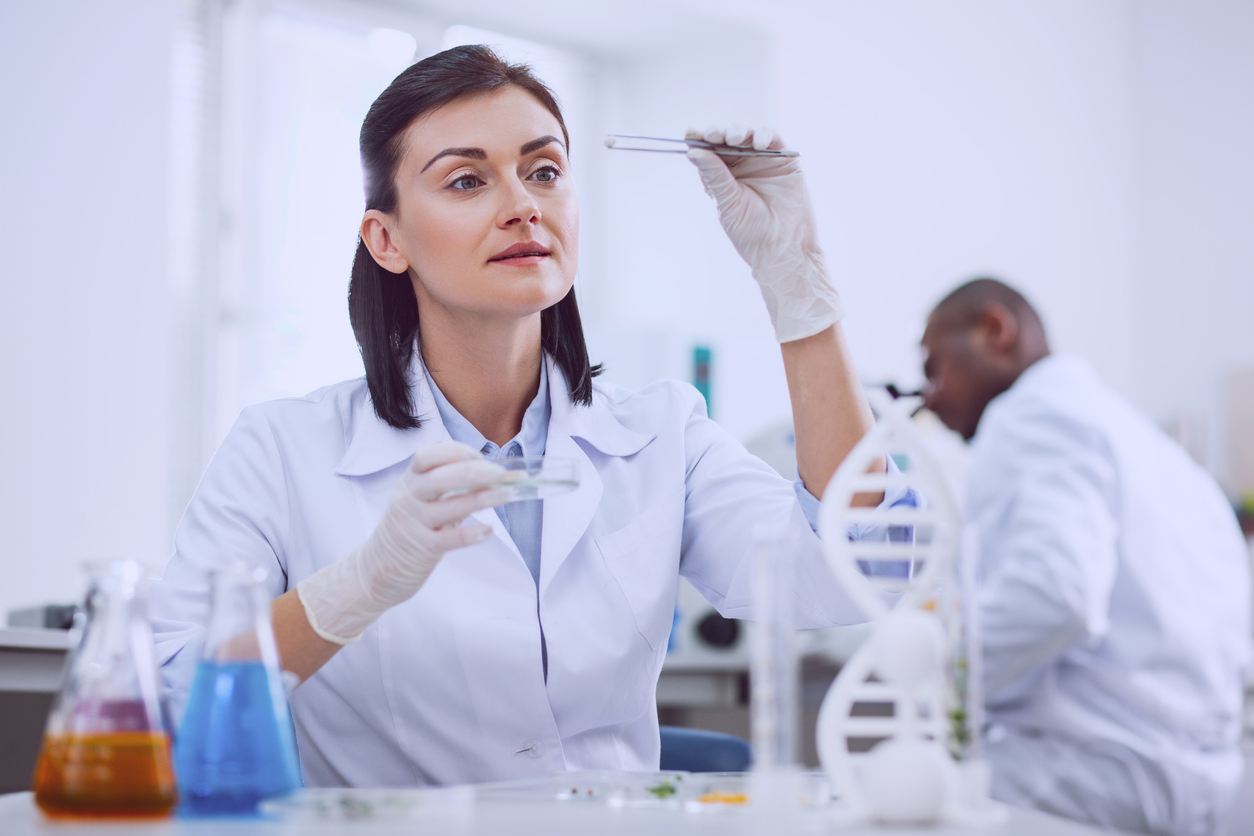“A clear and urgent public health need”: Professor Cathie Martin on her team’s vitamin D-rich gene edited tomatoes

Supporters of agricultural gene editing have been dealt a win this week, in the form of a new crop of vitamin D-rich tomatoes.
Working at the John Innes Centre in Norwich, a team supervised by Professor Cathie Martin has used gene editing technology to ‘turn off’ a specific molecule within the plant which in turn boosts the levels of vitamin D, the so-called sunshine vitamin.
According to John Innes scientists, the process is akin to ‘snipping’ out a small fragment of a plant’s genes, keeping the most desirable – without adding in any foreign DNA as would be the case in genetic modification.
When the John Innes team’s gene edited tomatoes are exposed to ultraviolet light in a lab, their provitamin D3 is converted into vitamin D3 – making it easy for our bodies to absorb it.
The research, published in Nature Plants, has been welcomed as a potential solution to the pervasive problem of vitamin D deficiency. As Professor Martin tells Food Matters Live, approximately one billion people worldwide do not get enough of the sunshine vitamin – the health implications of this range from immune and neurological disorders, to bone conditions and dental problems.
In theory, vitamin D deficiency is an easy problem to solve. Just 30 minutes spent outside in the sun is usually enough to reach our daily requirement. However in the UK – one of the least sunny countries in Europe – sunshine levels are usually only high enough to achieve this between April and September.
Outside of this window, we must rely on dietary sources of vitamin D or supplements – though both sources come with issues. It can be challenging to maintain sufficient levels of vitamin D as it’s only found in a limited amount of foods like oily fish, red meat, egg yolks and mushrooms. Topping up with vitamin D supplements is an option, however individuals often forget to take them regularly.
“There is a clear and urgent public health need for an economic, plant-based, sustainable source of vitamin D3,” Professor Martin says. With the estimated vitamin D deficiency costing the UK around £100 million annually, the Government is currently looking at ways to boost levels of the vitamin in the population.
The task now, Professor Martin explains, is to explore how the tomato plants fare when grown outdoors. Her team will begin field trials in the coming weeks to see how natural sunlight affects the vitamin content of the plants.
All being well, the tomatoes could become one of the first gene edited food products to hit supermarket shelves under the Government’s proposed Genetic Technology (Precision Breeding) Bill.
Current rules surrounding gene editing are considered prohibitively strict by many, having been inherited from the EU. According to the EU’s novel foods legislation, any food from plants “which is obtained by non-traditional propagating practices where those practices give rise to significant changes in the composition or structure of the food” must go through the lengthy process of approval.
In a show of post-Brexit independence, the prospective laws would make it easier for gene edited food to come to market – though products would still require novel food approval if sold outside of the UK.
In the eyes of the Government, gene editing to tackle vitamin D deficiency is one of many uses for the technology. Future applications could boost weather resilience in crops, reduce the need for pesticides and tackle food insecurity – all issues which require urgent solutions.
Professor Martin says such technology could also encourage a more circular approach to farming and in turn, keep prices low for consumers and farmers alike. “We believe that these tomatoes could be produced in a way that means they cost the same for the consumer, because the waste materials provide another income source for farmers and growers,” she says.
“The leaves, plant material and green unripe fruit all contain high levels of vitamin D and so could be used to produce vitamin D supplements.”
But while Professor Martin, her team and supporters across the food industry are currently singing the praises of gene editing technology, a significant number of people are wary about introducing it to our food system.
Many of those who oppose the technology do so because of the potential risks associated with the wider umbrella of genetic modification. Several campaign groups exist to highlight what they perceive as dangers associated with the technologies.
“Mistakes happen. Other changes can get made. Genetics is not like Lego,” said Liz O’Neill, Director of campaign group GM Freeze, to the BBC. “It is a new set of techniques, and it has developed very quickly which means that there is an awful lot that could go wrong.”
Supporters of gene editing say the technology is much safer than total genetic modification because the process does not result in foreign DNA being added to a species. Instead, the technology makes changes to traits already present – essentially speeding up selective breeding.
However, campaigners like O’Neill say this isn’t enough of a difference. “Gene editing is GM with better PR and unregulated gene editing is a future food crisis in the making,” she says.
Aside from the ethical issues, there are some practical hurdles involved too. Certain gene editing techniques stunt the growth of crops which can lead to smaller yields, for example. Additionally, while Professor Martin hopes supplementary income could keep costs down in the long run, the technology associated with gene edited crops could push prices up, limiting benefits only to those who can afford it.
Ultimately, genetically edited foodstuffs are likely still some way off from supermarket shelves. For scientists like Martin however, it is a worthy pursuit.
“It is very likely that some people would prefer to eat tomatoes enriched with vitamin D3 than eat a supplement that comes from sheep,” she says. “It is all about personal choice – I believe that consumers should be able to choose what they eat and drink, and this product provides an alternative source of an important vitamin.”








